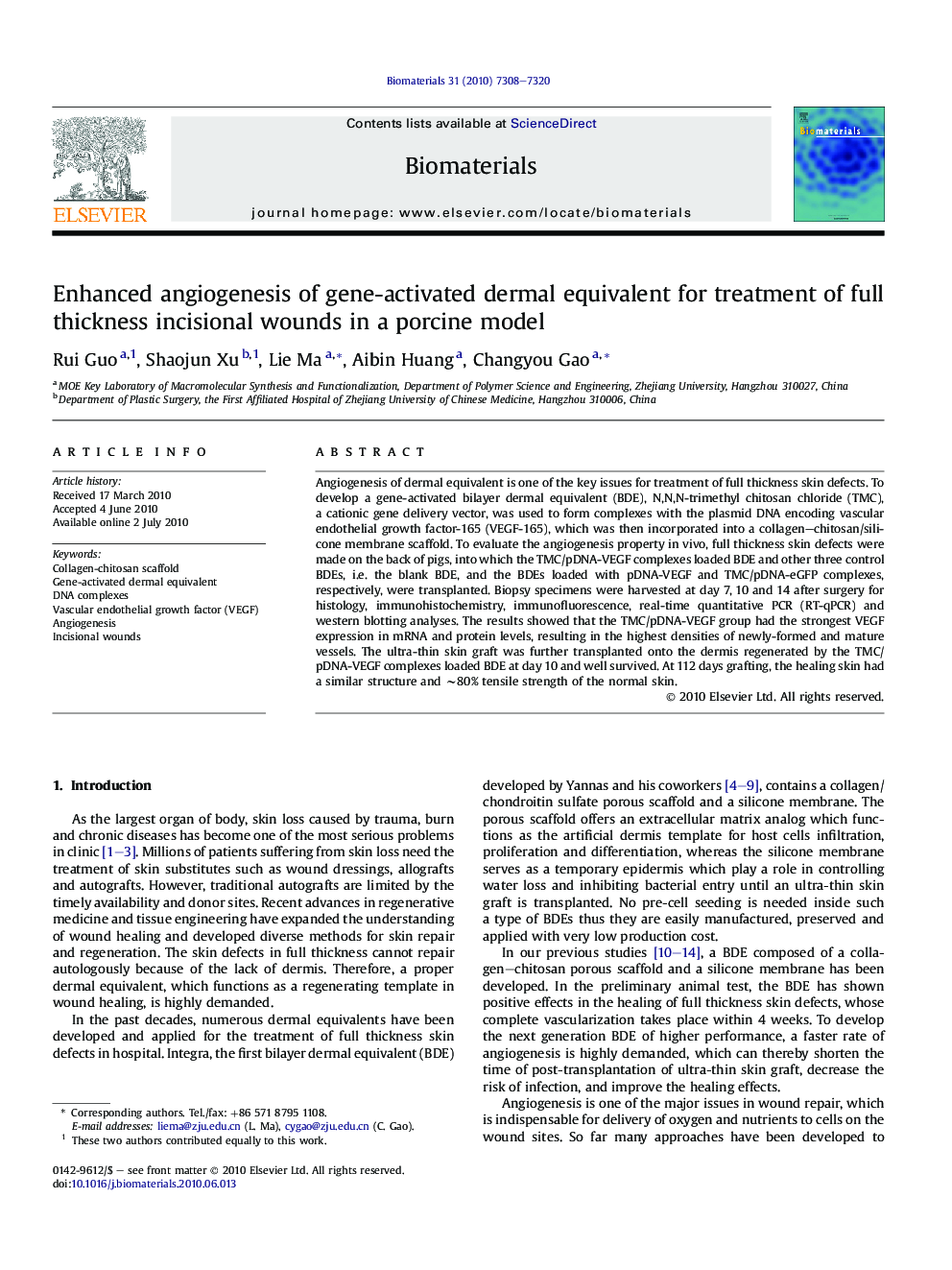| Article ID | Journal | Published Year | Pages | File Type |
|---|---|---|---|---|
| 8991 | Biomaterials | 2010 | 13 Pages |
Angiogenesis of dermal equivalent is one of the key issues for treatment of full thickness skin defects. To develop a gene-activated bilayer dermal equivalent (BDE), N,N,N-trimethyl chitosan chloride (TMC), a cationic gene delivery vector, was used to form complexes with the plasmid DNA encoding vascular endothelial growth factor-165 (VEGF-165), which was then incorporated into a collagen–chitosan/silicone membrane scaffold. To evaluate the angiogenesis property in vivo, full thickness skin defects were made on the back of pigs, into which the TMC/pDNA-VEGF complexes loaded BDE and other three control BDEs, i.e. the blank BDE, and the BDEs loaded with pDNA-VEGF and TMC/pDNA-eGFP complexes, respectively, were transplanted. Biopsy specimens were harvested at day 7, 10 and 14 after surgery for histology, immunohistochemistry, immunofluorescence, real-time quantitative PCR (RT-qPCR) and western blotting analyses. The results showed that the TMC/pDNA-VEGF group had the strongest VEGF expression in mRNA and protein levels, resulting in the highest densities of newly-formed and mature vessels. The ultra-thin skin graft was further transplanted onto the dermis regenerated by the TMC/pDNA-VEGF complexes loaded BDE at day 10 and well survived. At 112 days grafting, the healing skin had a similar structure and ∼80% tensile strength of the normal skin.
